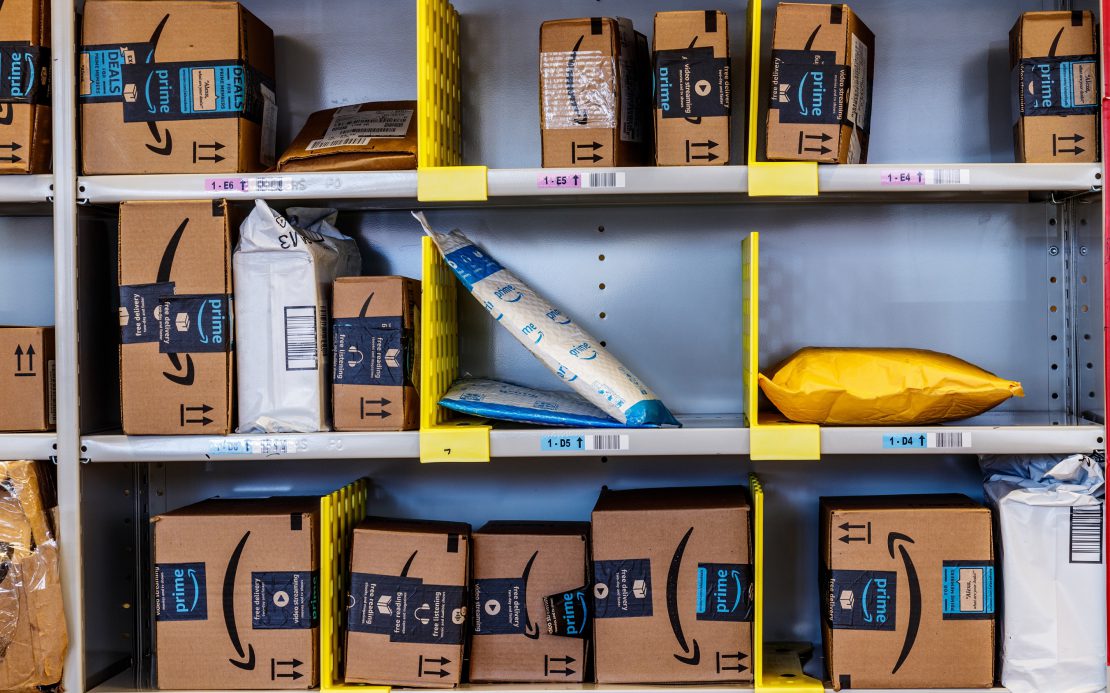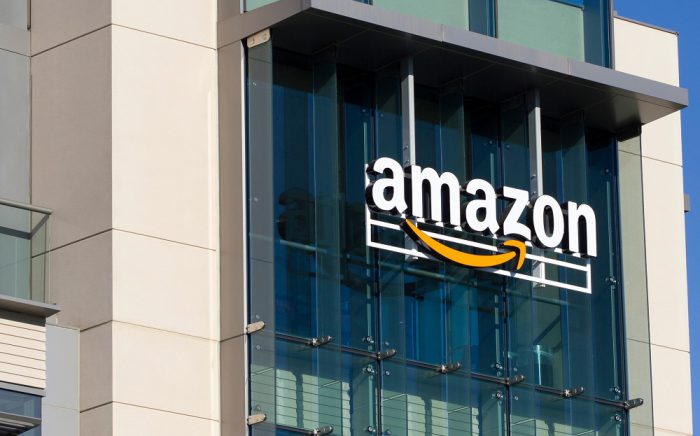Table of Contents
Do you want to grow a thriving online business? If so, Amazon is the perfect platform. It’s ready-made for eCommerce store success.
Amazon has over 300 million active users. In turn, Amazon sellers enjoy a massive, built-in customer base. Most Amazon shoppers have their payment and shipping information saved so that they can purchase with the click of a button. Finally, Amazon’s fulfillment service, Fulfillment By Amazon (FBA), makes the selling process super simple.
So how can you get started on Amazon?
How To Sell on Amazon Successfully?
Amazon has over 2.5 million third-party sellers. 200,000 of them earn $100,000 or more in annual revenue! To achieve similar success, you must learn the ins and outs of the Amazon platform. Turning a profit and scaling your business isn’t complex, but it does require a learning curve and dedication.
That’s why we’ve compiled these tips for selling on Amazon and increasing your sales. If you’re also interested in a guide on the best tools to use, check out our blog about the top 10 amazon seller tools to boost sales.
1. Set Up Your Amazon Seller Account
To sell on Amazon, you first need to create a seller account. This process is simple. It should only take you around 10 minutes.
There are two Amazon account options to choose from:
-
Individual Seller Account – With this account option, you’ll be charged $0.99 for each item you sell. If you’re a sporadic seller, this option is ideal.
-
Professional Seller Account – With this account option, you are charged a flat monthly fee of $39.99. If you sell 40 items or more per month, it’s the more cost-effective choice.
To complete the setup process, you’ll need your EIN or Social Security Number handy. Amazon will also ask you a few questions about your business and have you verify your address.
2. Choose Your Fulfillment Preference

Regardless of which seller account you set up, you’ll have another important decision to make: Fulfillment By Merchant (self-fulfillment) or Fulfilment By Amazon (FBA)?
FBA takes the following seller responsibilities off your hands:
- Inventory storage
- Packaging
- Shipping
All that’s left for you to do is choose your products, create your listings, and ship your items to an Amazon FBA warehouse. Once your product sells, Amazon will do the rest.
Does Amazon FBA Really Work?
73% of American Amazon sellers use FBA for their business, and for good reason. Using an Amazon warehouse comes with many perks, such as:
-
Lower shipping fees – By piggybacking on Amazon’s relationship with shipping providers, you will save big on shipping costs.
-
Amazon Prime qualification – FBA products qualify for Amazon Prime’s 2 Day, Next Day, and Same Day shipping options. Customers love fast shipping, so you’ll sell more if you offer these options.
-
Amazon’s name – When you use FBA, Amazon’s name will be associated with your product line. This will help you build trust with buyers. Your customers will also enjoy Amazon’s top-tier customer service.
-
Faster business growth – Since FBA outsources the logistics, you can grow your business faster, with fewer obstacles. Plus, you’ll have more time and energy to focus on other areas of your business, like product research and promotion.
While these benefits are incredibly appealing, FBA also has some drawbacks. You will be charged FBA fees which may result in a lower profit margin, since Amazon stores and fulfills your orders. If your products aren’t selling, these storage fees can rack up fast. Furthermore, FBA products have a higher return rate, since Amazon manages their return policy. Despite this, FBA is still highly recommended for sellers who want to build a scalable business.
3. Conduct Product Research
With the account setup out of the way, it’s time to focus on the cornerstone of being an Amazon seller: the products. While you can sell just about anything under the sun on Amazon, some products sell better than others.
These are the most popular product categories on Amazon:
- Electronics
- Apparel
- Home and kitchen products
- Beauty and personal care
- Books
To set yourself up for success, sell products that have a high demand and relatively low competition. Finding these items takes a little research, but it will pay off in the long run as you see each new product fly off the shelves.
Create A Private Label
To enjoy even better sales outcomes, sell your own brand of private label products.
Most products are already being manufactured by suppliers. To make them your own, simply add your branding, logo, and design to them. Amazon likes to support private label sellers, so it’s a powerful initiative if you want to enhance your results.
4. Find A Private Label Supplier
Once you’ve decided what product to sell, whether it’s yoga pants, eye masks, or coffee mugs, the next step is to find a supplier. China has many inexpensive suppliers, such as Alibaba.
To source from Alibaba, simply:
- Search for your desired product
- Compare the options and choose one
- Order your desired amount
- Ask the supplier to add your branding and design
- Have them ship the products to you
It’s that simple!
5. Price Your Products Competitively
Pricing is a crucial factor in your products’ selling potential. If you price too high, you won’t get as many sales. However, if you drop your price too low, you’ll struggle with profit margin.
As a rule of thumb, never price your product more than 10% higher than non-FBA sellers. Beyond that, consider the quality of your product when setting prices. You can adjust your prices as needed once you’ve tracked your sales metrics.
6. Create Your Product Listings
After you’ve manufactured your products, list them on Amazon’s catalog. Find this in the “inventory” tab of your seller central dashboard. Make sure to review Amazon’s product listing guidelines before you begin.
How Do I Make My Amazon Product Stand Out?
To create an enticing listing and product description that encourages sales, follow these steps:
-
Optimize your title – Your product title is the first thing Amazon shoppers will read. It should be descriptive, alluring, and less than 200 characters. Include your brand name to enhance its credibility, and don’t forget to add in your keyword.
-
Upload high-quality images – Showcase professional, high-resolution photos of your products. Your primary image must use a white background. You can also include photos that show your product in use and from a variety of angles. Make sure your photos portray the product’s size and details.
-
Write a detailed product description – Online consumers like to do their research and compare the same product from different brands. Give potential buyers everything they need to understand why your product is worth their money. Describe your product’s features, benefits, and unique selling points. Explain how it will improve the life of your potential customer.
By optimizing your listing, it will stand out to Amazon’s visitors and capture more sales.
The Importance of Keyword Research

If you know anything about digital marketing, you’ve probably heard of Search Engine Optimization (SEO). Amazon is a search engine, just like Google or Bing. Thus, many of the same SEO techniques apply.
Amazon SEO helps your product listing get found by interested shoppers. It does so by boosting your products’ positions on the Amazon search results page. To optimize your listing for SEO, figure out what your potential customers are searching for. The search terms they use are known as “keywords.” Include these keywords in your Amazon listing’s title and description.
So how can you choose the most valuable keywords? Simply use these Amazon keyword research tools:
7. Promote Your Listing
Promotion is the key to a powerful new product launch. By offering discounts from the start, you will expedite your sales and show Amazon that you’re a popular retailer. This will encourage Amazon to place your product listings more prominently on its search results pages.
Amazon provides robust promotional options, including:
-
Sponsored Products Ads – These ads promote individual products on Amazon’s search results pages and product detail pages, getting your listing in front of more eyes.
-
Sponsored Display Ads– These ads show up on and off Amazon’s website. As a form of display ad, they appear to audiences that have shown previous interest in your product.
-
Lightning Deal Promotions – Score a slot on Amazon’s popular “Lightning Deals” page. For a few hours, customers can purchase your item at a discount, and you’ll enjoy a featured promotion from Amazon.
You can also promote your listing on social media, using Facebook ads or Instagram ads.
8. Build Trust With Positive Reviews
Finally, to increase your sales on Amazon, you need to earn a positive seller rating. Online shoppers rely heavily on reviews to determine which products are worth their money. If your shop has a high rating, they will feel much more confident purchasing from it.
To acquire more positive reviews:
- Ask customers for their feedback
- Provide outstanding customer service
- Promptly respond to customers’ questions
- Address negative reviews with grace and responsibility
As an FBA seller, Amazon takes care of almost all customer service so that you can expect high ratings.
RebateKey: Boost Your Amazon Sales Today

Now you know how to create a profitable Amazon business. To accelerate your Amazon sales even further, sign up as a seller on RebateKey.
This will allow you to provide attractive Amazon coupons to your customers, encouraging them to purchase from you and spread the word to their friends. In turn, your sales on Amazon will soar!
Sources:
https://www.sellerapp.com/blog/amazon-seller-statistics/
https://www.statista.com/statistics/1020046/global-fba-usage-top-amazon-sellers/
https://www.statista.com/statistics/639155/popular-amazoncom-sales-by-category/





